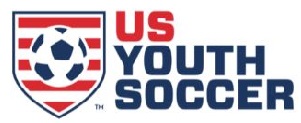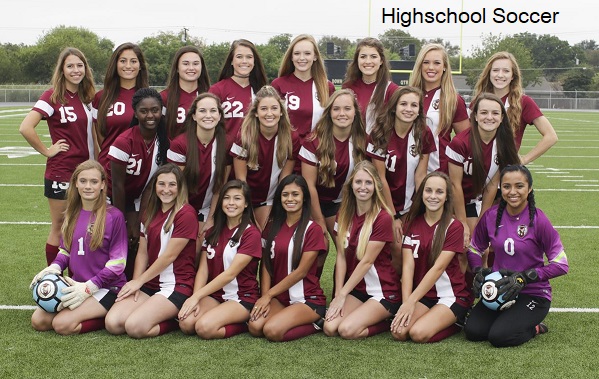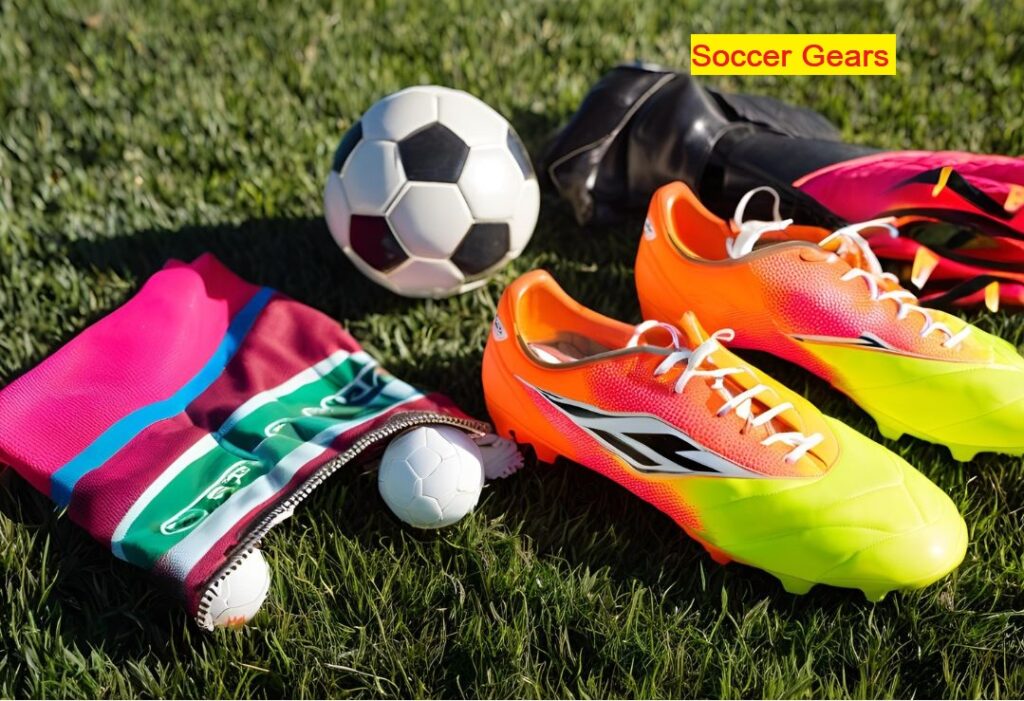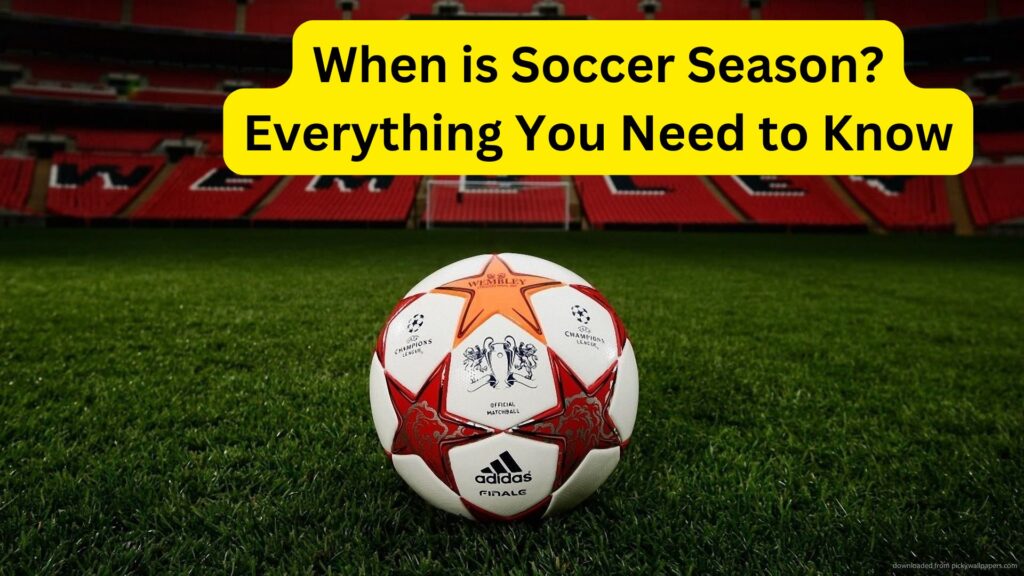Soccer, the world’s most popular sport, captivates millions of fans across the globe with its thrilling matches and passionate rivalries. But for many, understanding the intricacies of soccer season can be as challenging as mastering a perfect free kick. This comprehensive guide will walk you through the various soccer season worldwide, from youth leagues to professional competitions, ensuring you never miss a moment of the beautiful game.
Soccer Season Around the World
Soccer seasons vary significantly depending on the country, league, and level of play. Let’s dive into the diverse landscape of soccer schedules across different regions and age groups.
U.S. Youth Soccer Season

Youth soccer in the United States typically follows the academic calendar, with most leagues operating from fall to spring. However, many regions also offer summer leagues and tournaments to keep young players engaged year-round.
Fall Season: September to November
Spring Season: March to May
Summer Tournaments: June to August
Youth soccer programs cater to various age groups, from under-5 to under-19. These leagues focus on player development, sportsmanship, and fun, providing a foundation for future soccer stars.
Key Youth Soccer Leagues:
- US Youth Soccer National League
- Elite Clubs National League (ECNL)
- Development Academy (DA)
“Youth soccer is the heartbeat of the sport’s future. It’s where passion is ignited and skills are honed.” – Landon Donovan, former U.S. Men’s National Team player
High School Soccer Season

High school soccer aligns with the academic year, but the exact timing can vary by state and region. Generally, there are two main seasons:
Fall Season: August to November (Most common for boys’ teams) Spring Season: February to May (Most common for girls’ teams)
Some states, like Texas and Florida, may have different schedules due to weather conditions. High school soccer provides a competitive environment for student-athletes, often serving as a stepping stone to college soccer or even professional careers.
Notable High School Soccer Tournaments:
- High School All-American Game
- Dallas Cup (features high school-aged players)
- Surf Cup (San Diego)
College Soccer Season

College soccer in the United States follows a fall schedule for both men’s and women’s teams. The season typically runs from August to December, culminating in the NCAA College Cup.
Regular Season: Late August to early November
Conference Tournaments: Early to mid-November
NCAA Tournament: Late November to early December
College soccer serves as a crucial developmental stage for many players aspiring to professional careers. It also offers a high level of competition and exposure to scouts from professional leagues.
Top College Soccer Conferences:
1. Atlantic Coast Conference (ACC)
2. Pac-12 Conference
3. Big Ten Conference
4. Southeastern Conference (SEC)
5. Big East Conference
Amateur Leagues in the United States
Amateur leagues provide opportunities for adult players to continue their soccer journey beyond high school or college. These leagues often operate year-round, with different competitions taking place throughout the seasons.
United Premier Soccer League (UPSL)
The UPSL is one of the largest amateur leagues in the United States, featuring a promotion and relegation system.
Spring Season: February to June
Fall Season: September to December
National Premier Soccer League (NPSL)
The NPSL is another prominent amateur league, focusing on developing talent for professional soccer.
Regular Season: May to July
Playoffs: July to August
NISA Nation
NISA Nation is a newly established amateur league that serves as a bridge between amateur and professional soccer.
Season: Varies by region, typically running from spring to fall
Major League Soccer (MLS) Season
Major League Soccer, the top professional soccer league in the United States and Canada, follows a unique schedule compared to many European leagues.
Regular Season: Late February/early March to October
Playoffs: October to December
MLS Cup Final: Early to mid-December
The MLS teams also participate in other competitions throughout the year:
- U.S. Open Cup: March to September
- Canadian Championship: May to September (for Canadian MLS teams)
- Leagues Cup: July to August (competition between MLS and Liga MX teams)
“MLS has grown tremendously over the years. The level of play and the passion of the fans rival some of the best leagues in the world.” – David Beckham, Inter Miami CF co-owner and former MLS player
European Soccer Season Leagues’ Schedules
European leagues typically follow a fall-to-spring schedule, with slight variations among countries. Here’s a breakdown of some top European leagues:
| League | Country | Season Start | Season End |
| Premier League | England | August | May |
| La Liga | Spain | August | May |
| Bundesliga | Germany | August | May |
| Serie A | Italy | August | May |
| Ligue 1 | France | August | May |
These leagues also participate in various cup competitions and European tournaments like the UEFA Champions League and UEFA Europa League, which run concurrently with the domestic seasons.
European Soccer Calendar Highlights:
- UEFA Champions League: September to May
- UEFA Europa League: September to May
- European Championship (Euro): Every four years (June to July)
South American Countries’ Calendar-Year Format
Unlike European leagues, many South American countries follow a calendar-year format for their soccer seasons. This unique schedule aligns better with the region’s climate and traditional summer break. Soccer season details is;
Major South American Leagues:
1. Brazilian Série A:
o Season: April to December
o State Championships: January to April
2. Argentine Primera División:
o Season: January to December (with a short winter break)
3. Colombian Categoría Primera A:
o Apertura: January to June
o Finalización: July to December
4. Chilean Primera División:
o Season: January to December (with a short winter break)
The calendar-year format allows South American leagues to avoid conflicts with major international tournaments like the Copa América and the FIFA World Cup, which typically take place during the Northern Hemisphere’s summer months.
Soccer Gear and Training: Preparing for the Soccer Season

Regardless of when your soccer season starts, proper preparation is key to success on the field. Here are some essential tips for gearing up and training for the soccer season:
Essential Soccer Gear in soccer season
1. Cleats: Choose cleats appropriate for your playing surface (firm ground, soft ground, or artificial turf).
2. Shin guards: Mandatory for protection during matches and practice.
3. Soccer ball: Invest in a quality ball for practice and training.
4. Training apparel: Breathable shirts, shorts, and socks designed for athletic performance.
5. Goalkeeper gloves: Essential for those playing between the posts.
Off-Season Training Tips
1. Maintain cardiovascular fitness: Regular running, cycling, or swimming to keep your endurance up.
2. Strength training: Focus on core strength and leg muscles to improve your on-field performance.
3. Ball control drills: Practice juggling, dribbling, and passing to keep your touch sharp.
4. Flexibility and agility work: Incorporate stretching and agility drills to prevent injuries and improve quickness.
5. Mental preparation: Study game tactics, watch professional matches, and visualize your on-field success.
“The off-season is where champions are made. It’s the perfect time to work on your weaknesses and turn them into strengths.” – Megan Rapinoe, U.S. Women’s National Team player.
You May Also Like: What Are Soccer Friendlies?
Soccer Champions: Celebrating Success
The culmination of any soccer season is the crowning of champions. Here’s a look at some recent title winners from major leagues and tournaments:
Major League Soccer (MLS):
- 2023 Champions: Columbus Crew
- 2022 Champions: Los Angeles FC
English Premier League:
- 2022-2023 Champions: Manchester City
- 2021-2022 Champions: Manchester City
UEFA Champions League:
- 2022-2023 Champions: Manchester City
- 2021-2022 Champions: Real Madrid
FIFA World Cup:
- 2022 Champions: Argentina
- 2018 Champions: France
These champions represent the pinnacle of soccer achievement, inspiring millions of players and fans around the world.
You may also like this : oldest-active-soccer-players
Conclusion: Embracing the Soccer Season
Understanding soccer seasons is crucial for players, coaches, and fans alike. Whether you’re participating in youth leagues, following your favorite college team, or cheering for a professional club, knowing when and where the action takes place enhances your soccer experience.
Remember that soccer is a year-round sport, with different leagues and tournaments filling the calendar. Even during off-seasons, players continue to train, improve their skills, and prepare for the next challenge.
As you navigate the various soccer seasons, keep in mind that each league and level of play offers unique experiences and opportunities for growth. Whether you’re lacing up your cleats for a match or settling in to watch a game, the beautiful game of soccer always has something exciting in store.
So mark your calendars, gear up, and get ready to embrace the passion and excitement of soccer, no matter what time of year it is!
FAQ’s about Soccer Season
Q: When does the MLS season start?
A: The MLS regular season typically starts in late February or early March.
Q: How long is a youth soccer season?
A: Youth soccer seasons usually run for 8-10 weeks in both fall (September-November) and spring (March-May).
Q: When do European soccer leagues begin?
A: Most European leagues start in August and end in May of the following year.
Q: What months are high school soccer season?
A: It varies by state, but typically boys play in fall (August-November) and girls in spring (February-May).
Q: How long is the college soccer season?
A: The NCAA soccer season runs from August to December, including playoffs.
Q: When are soccer tryouts usually held?
A: Most tryouts occur 1-2 months before the season starts. For fall seasons, tryouts are usually in late summer.
Q: Do soccer teams play in winter?
A: Professional teams in warmer climates and indoor leagues play year-round. Many outdoor leagues take a winter break.
Q: When is the Champions League season?
A: The UEFA Champions League runs from September to May, alongside domestic league seasons.
Q: What is the best season to start playing soccer?
A: Spring and fall are ideal seasons to start, as most youth and recreational leagues begin during these times.
Q: How often do professional soccer teams play?
A: Professional teams typically play 1-2 games per week during their season.
Q: When does the Premier League season end?
A: The English Premier League season ends in May.
Q: Are there summer soccer leagues?
A: Yes, many recreational and youth leagues offer summer programs and tournaments.
Q: How long is the soccer off-season?
A: Professional teams typically have a 6-8 week off-season, while youth and amateur leagues might have longer breaks.
More MCQs
Q: When do South American soccer leagues play?
A: Most South American leagues follow a calendar-year format, running from January to December.
Q: What’s the difference between fall and spring soccer seasons?
A: Both seasons are similar in length, but fall seasons often have better weather conditions and more consistent schedules.
Q: When are soccer playoffs?
A: Playoffs typically occur at the end of each season – for MLS, it’s October to December; for European leagues, it’s April to May.
Q: How many games in a soccer season?
A: It varies by league: MLS teams play 34 regular-season games, Premier League teams play 38, and youth teams typically play 8-12 games.
Q: When should I register for soccer leagues?
A: Registration usually opens 2-3 months before the season starts. For fall seasons, register in summer; for spring seasons, register in winter.
Q: Do indoor soccer leagues have different seasons?
A: Indoor soccer leagues often run during winter months (November-March) when outdoor play is limited by weather.
Q: When is the World Cup season?
A: The FIFA World Cup is held every four years, typically in June-July, though the 2022 World Cup was held in November-December.

Oliver Brown, a seasoned football blogger with a knack for insightful commentary, brings decades of passion and expertise to Zooming Football. Known for his sharp analysis and engaging storytelling, Oliver delves deep into the game’s nuances, offering readers a unique perspective on football’s most captivating stories and strategies.







